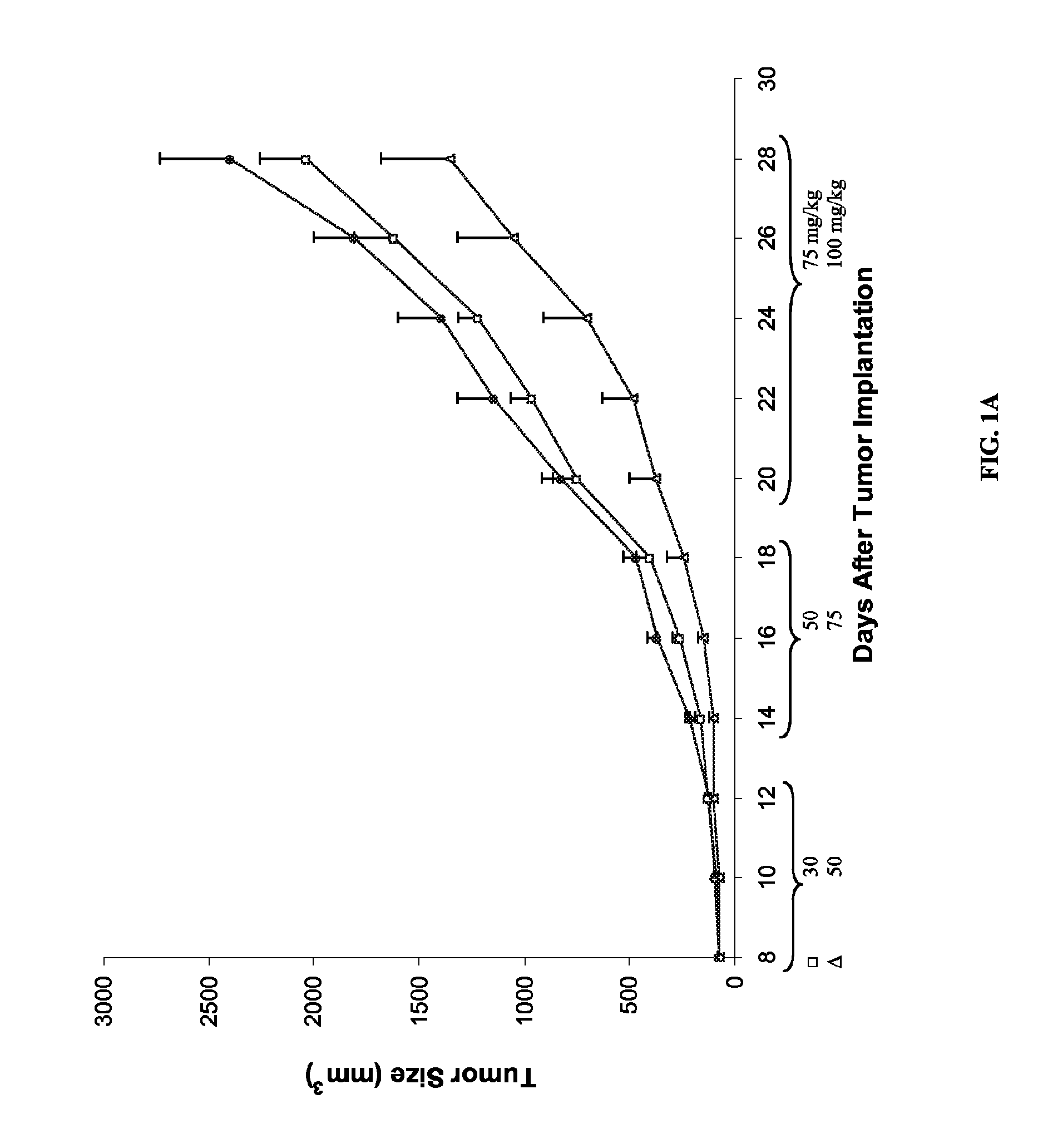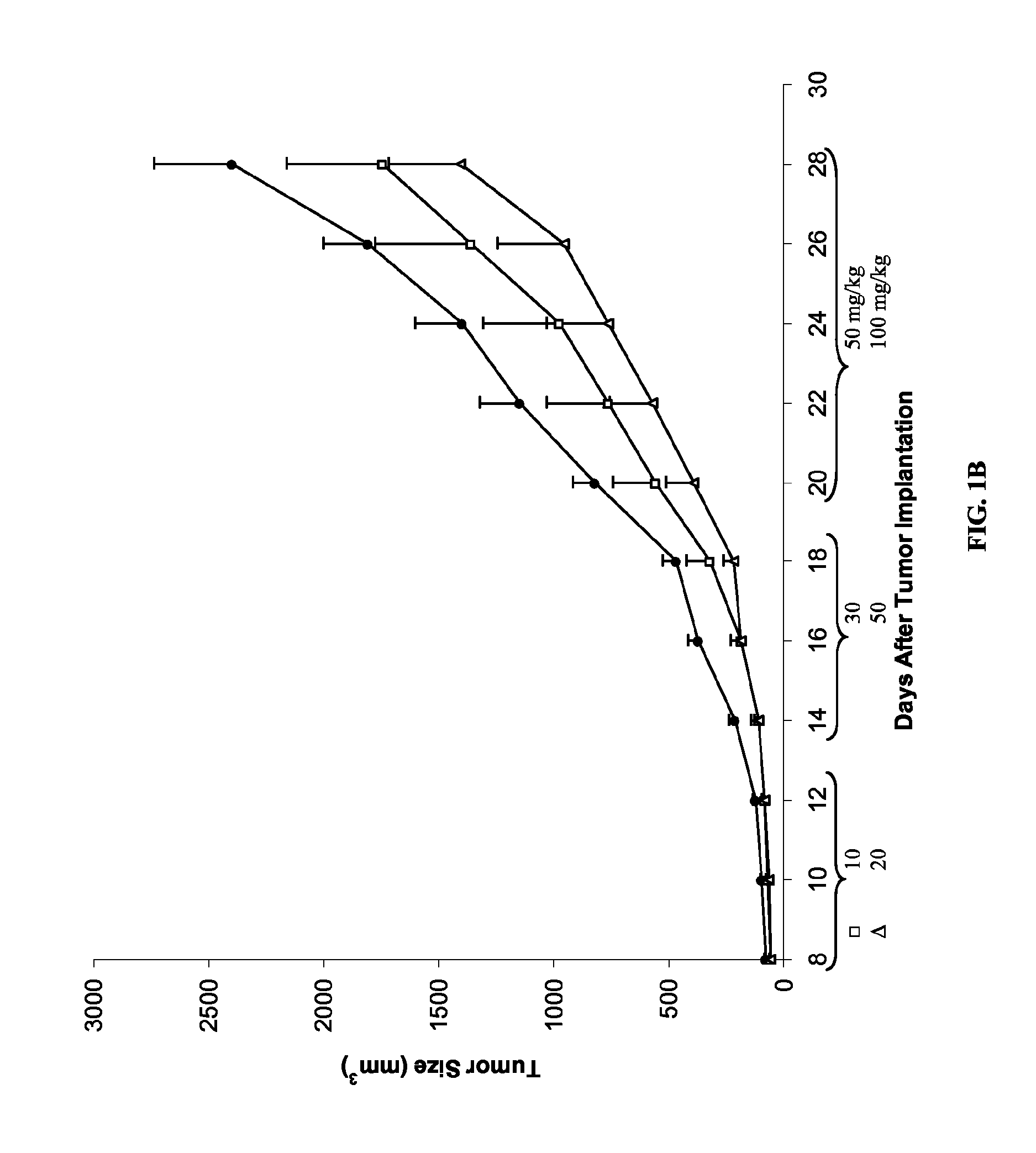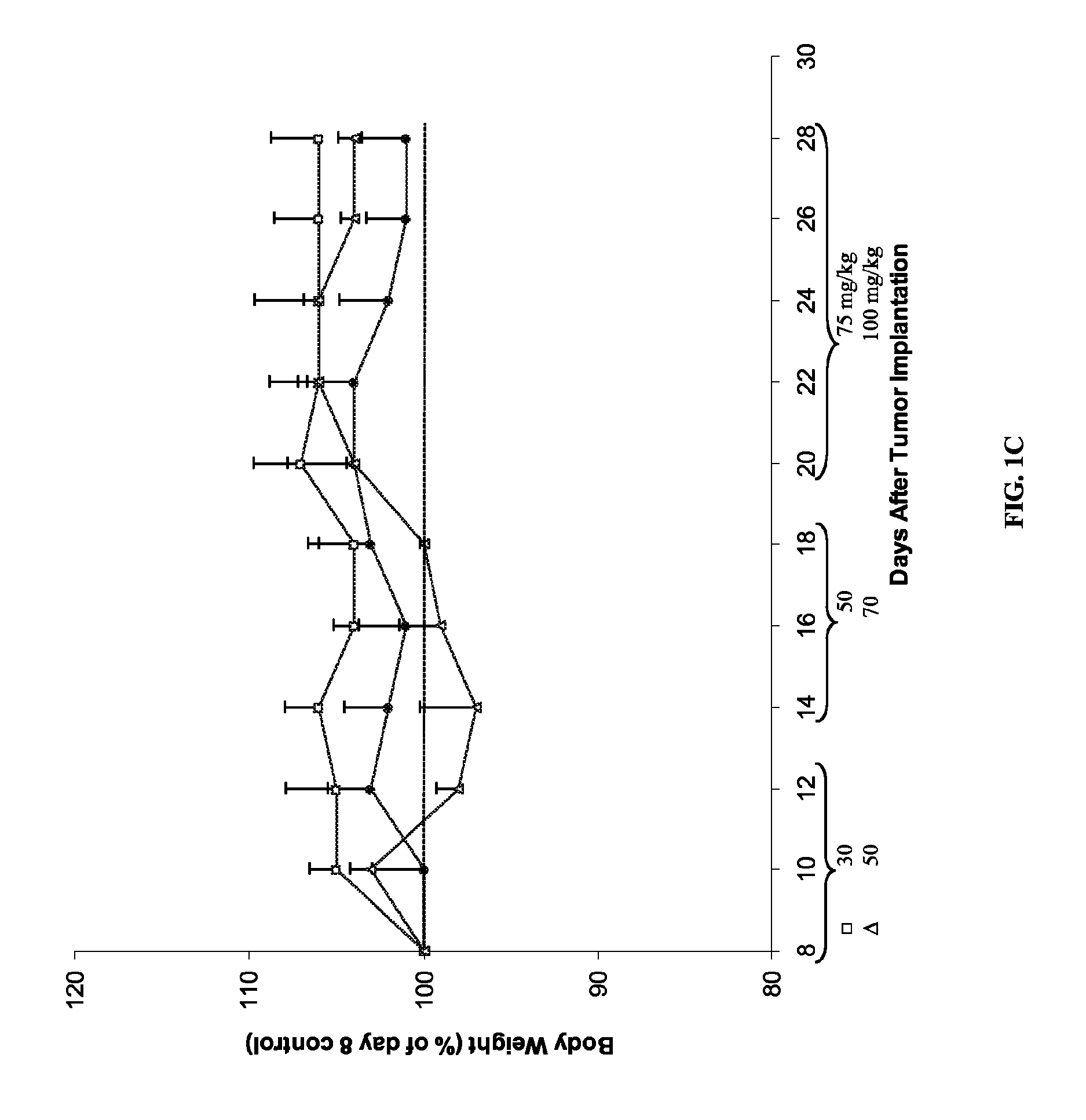Compounds, compositions and methods for reducing toxicity and treating or preventing diseases
a technology of compound composition and toxicity, applied in the field of compound composition and method for reducing toxicity and treating or preventing diseases, can solve the problems of enlarging and occupying space in vital areas of the body, failure to control cell turnover and growth, and tumor growth progressively, so as to reduce or prevent the side effects of drugs, reduce the toxic effect of cytotoxic agents, and enhance the immune system
- Summary
- Abstract
- Description
- Claims
- Application Information
AI Technical Summary
Benefits of technology
Problems solved by technology
Method used
Image
Examples
example 1
5.1 Example 1
Synthesis of Panaxytriol
[1121]A. Synthesis of Alkynyl Bromide 6′
[1122](R)-Me-CBS reagent (1.0 M Toluene, 2.14 mL, 2.14 mmol) was transferred into a freshly flame-dried flask, and the toluene was removed in vacuo over 1 day. The CBS reagent was diluted with a THF solution of 5-trimethylsilyl-1-penten-4-yn-3-one (163 mg, 1.07 mmol), and the resultant solution was cooled to −30° C. At −30° C., BH3-Me2S (0.589 mL, 1.18 mmol) was slowly added over 10 min. After addition of BH3-Me2S, TLC analyses indicated that the reaction was complete. Methanol was slowly added, and reaction mixture was slowly warmed to room temperature. The reaction mixture was diluted with diethyl ether, and the resultant organic phase was washed with 2:1 (v:v) NaOH / saturated NaHCO3 solution until the aqueous phase was clear, and then washed with brine. After being dried over MgSO4, the organic phase was removed, diluted with diethyl ether, and to this was added a solution of 0.5 M HCl in methanol (4.5 mL...
example 2
5.2 Example 2
Synthesis of Compound (A)
[1128]To a THF solution of panaxytriol (0.61 g, 2.191 mmol) were added Me2C(OCH3)2 (3 mL, 21.91 mmol) and p-TsOH (42 mg, 0.2191 mmol) at room temperature. After stiffing overnight, the reaction mixture was quenched with saturated NaHCO3. After an aqueous workup, the resultant mixture was purified using flash column chromatography (hexane / ethyl acetate 15:1 to 7:1) to provide Compound (A) (0.6567 g, 94%) as a colorless oil: Rf:0.19 (hexane:ethyl acetate=8:1); [α]D25.7°: +5.0 (c=0.47, acetone); 1H NMR (400 MHz, CDCl3): δ 5.95 (ddd, 1H, J=17.0, 10.1, 5.3 Hz), 5.46 (d, 1H, J=17.0 Hz), 5.25 (d, 1H, J=10.1 Hz), 4.91 (d, 1H, J=5.3 Hz), 3.80 (dt, 1H, J=7.7, 4.2 Hz), 3.72 (dt, 1H, J=7.9, 5.3 Hz), 2.60 (m, 2H), 1.2-1.7 (m, 12H), 1.37 (s, 6H), 0.89 (t, 3H, J=6.8 Hz); 13C NMR (75 MHz, CDCl3): δ 136.3, 117.6, 109.1, 80.9, 78.6, 77.2, 75.0, 71.5, 66.9, 64.0, 33.5, 32.4, 30.3, 29.8, 28.0, 27.7, 26.6, 24.2, 23.3, 14.8; IR (neat): v 3434.8, 2927.4, 2856.3, 2256....
example 3
5.3 Example 3
Synthesis of Compound (B)
[1129]To a THF solution of panaxytriol (6 mg, 0.02155 mmol) was added MnO2 (22 mg, 0.251 mmol) at room temperature. After stiffing overnight, the reaction mixture was filtered through a short column of Celite and the solvent was removed. The concentrated reaction mixture was purified using flash column chromatography (hexane / ethyl acetate 4:1 to 2:1) to provide the Compound (B) (4.5 mg, 76%) as a colorless oil: Rf: 0.19 (hexane:ethyl acetate=3:1); [α]D20.7°: +14.4 (c=0.44, CHCl3); 1H NMR (400 MHz, CDCl3): δ 6.55 (d, 1H, J=17.3 Hz), 6.41 (dd, 1H, J=17.3, 10.0 Hz), 6.22 (d, 1H, J=10.0 Hz), 3.72 (m, 1H), 3.61 (m, 1H), 2.68 (d, 2H, J=6.2 Hz), 1.2-1.6 (m, 12H), 0.88 (t, 3H, J=6.6 Hz); 13C NMR (75 MHz, CDCl3): δ 178.1, 138.1, 134.8, 86.5, 77.6, 73.4, 72.3, 71.2, 66.1, 34.0, 32.3, 29.9, 29.6, 25.9, 25.7, 23.0, 14.9; IR (neat): v 3300.3, 2945.4, 2850.4, 2231.9, 2150.6, 1650.8, 1607.1, 1463.4, 1400.9, 1257.2, 1163.5, 1132.3, 1094.8, 1026.0, 976.1, 938.6,...
PUM
| Property | Measurement | Unit |
|---|---|---|
| volume | aaaaa | aaaaa |
| temperature | aaaaa | aaaaa |
| energy | aaaaa | aaaaa |
Abstract
Description
Claims
Application Information
 Login to View More
Login to View More - R&D
- Intellectual Property
- Life Sciences
- Materials
- Tech Scout
- Unparalleled Data Quality
- Higher Quality Content
- 60% Fewer Hallucinations
Browse by: Latest US Patents, China's latest patents, Technical Efficacy Thesaurus, Application Domain, Technology Topic, Popular Technical Reports.
© 2025 PatSnap. All rights reserved.Legal|Privacy policy|Modern Slavery Act Transparency Statement|Sitemap|About US| Contact US: help@patsnap.com



